FUNDING CUTS IMPACT CT HUMANITIES: Help CT Humanities navigate recent funding cuts and continue our vital work across Connecticut. All donations made to CTH will be matched dollar-for-dollar up to $50,000. Donate today!
News & Updates
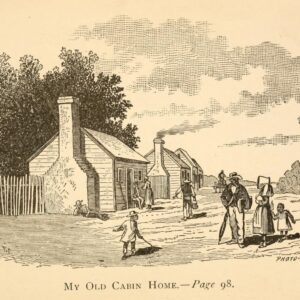
James Lindsey Smith Takes the Underground Railroad to Connecticut
James Lindsey Smith was one of many slaves who found freedom through the Underground Railroad network that included many stops in Connecticut.
Read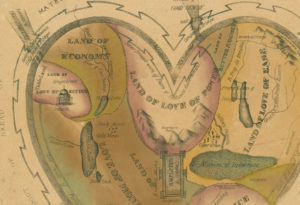
The Open and Fortified Country of the Human Heart: A Victorian Lady’s View of Love
A pair of 19th-century prints provides a virtual road map to the human heart, illustrating contemporary male and female attitudes towards courtship and love.
Read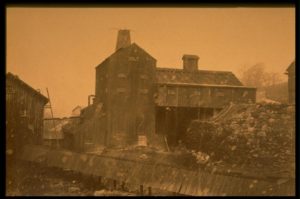
Two Cornwall Firms Part of Famed Salisbury Iron District
As part of what is today called the Salisbury Iron District, Cornwall manufactured iron that was nationally recognized for its quality and durability.
Read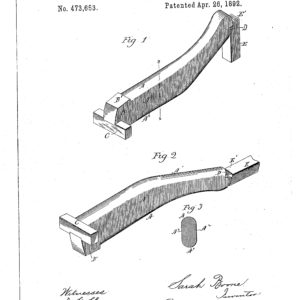
Sarah Boone: First Connecticut Black Woman to Receive Patent
In1892, Sarah Boone of New Haven became the first Black woman in Connecticut to be awarded a patent—for an improvement in the use of an ironing board.
Read
Alexander Calder and Making Art Political
In addition to his famous works of art, Alexander Calder lent his talents and reputation to support political campaigns in the 1960s and 70s.
Read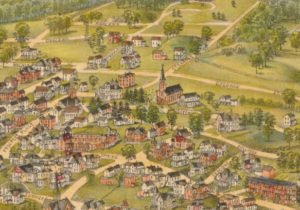
Joel T. Case and the Victorianization of Bristol’s Federal Hill
The Victorian designs of inventor and architect Joel T. Case make substantial contributions to the landscape of the Federal Hill area in Bristol.
Read
Blizzard Halts Mail Delivery – Today in History: February 7
On February 7, 1978, the US Postal Service was unable to deliver mail to many Connecticut residents for the first time in almost 40 years.
Read
Charles Ethan Porter, Portrait of a 19th-Century African American Painter
Charles Ethan Porter was a prolific still life painter in the 19th and early 20th century.
Read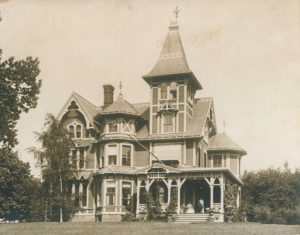
Dr. Mary B. Moody Challenges Victorian Mores About Women in Medicine
New Haven resident Dr. Mary Moody the first female graduate of the medical school at the University of Buffalo, and the first female member of the American Association of Anatomists.
Read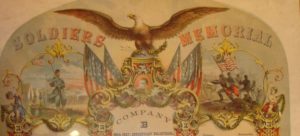
Connecticut’s Black Civil War Regiment
“If you win freedom and citizenship, we shall share your freedom and citizenship.” With these words, abolitionist Frederick Douglass reminded African American soldiers from Connecticut that they fought for the hopes of many.
Read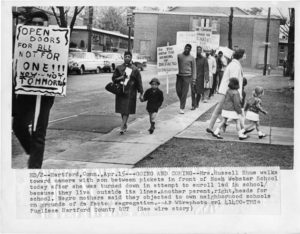
Black History Resources
Resources to learn more about Connecticut’s contributions to the narrative of Black history in America.
Read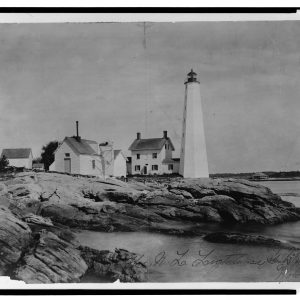
New London Harbor Lighthouse: Connecticut’s First Official Lighthouse
New London Harbor Lighthouse, originally opened in 1761 and rebuilt in 1801, is Connecticut’s oldest surviving and tallest lighthouse.
Read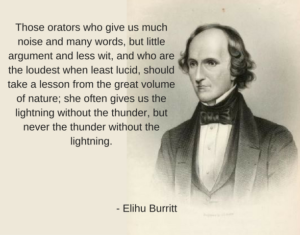
Apostle of Peace: Elihu Burritt’s Quest for Universal Brotherhood
Elihu Burritt, a blacksmith by trade, became an advocate for peace around the world throughout the 19th century.
Read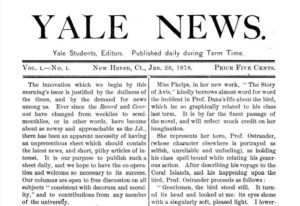
Oldest College Daily – Today in History: January 28
On January 28, 1878, the first edition of the Yale News proclaimed, “The innovation which we begin by this morning’s issue is justified by the dullness of the times, and by the demand for news among us.”
Read
Bradley Airport’s Military Origins
In 1941, the United States government anxiously pursued opportunities to establish an air base in Connecticut to bolster defenses along the East Coast.
Read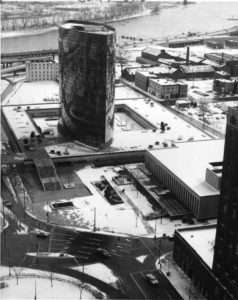
The Phoenix Building, Hartford
The Phoenix Mutual Life Insurance Building is a significant example of the modernist architectural style that was prevalent in urban renewal projects in the 1950s and 1960s.
Read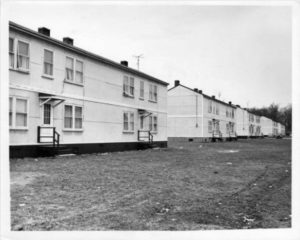
The Debate Over Who Could Occupy World War II Public Housing in West Hartford
In the 1940s, African American war workers eligible for government-funded housing found access restricted to some properties despite vacancies.
Read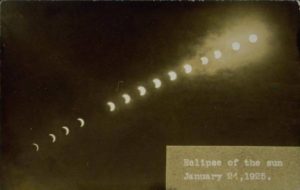
A Total Eclipse of the Sun – Today in History: January 24
On January 24, 1925, Connecticut residents witnessed a full solar eclipse.
Read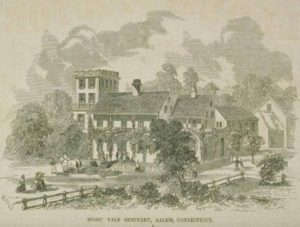
Music Vale Seminary in Salem Credited as Being First in US
In the mid-19th century, Orramel Whittlesey founded a music conservatory in Salem, Connecticut.
Read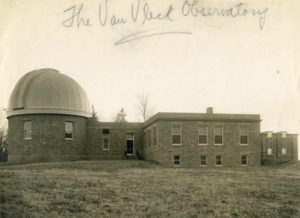
The Van Vleck Observatory: A Reflection of Environmental Conditions
Designers of the Van Vleck Observatory overcame numerous environmental and geographical challenges to help Wesleyan University make an impact on the world’s understanding of the universe.
Read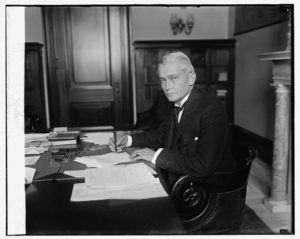
From the State Historian: Discovering the Explorer Hiram Bingham III
Of all the Connecticans who have left their mark in distant places, perhaps none made a more lasting—or more controversial—impression than this explorer.
Read
Civic Center Roof Collapses – Today in History: January 18
On January 18, 1978, at about 4:20 in the morning, the Hartford Civic Center roof collapsed.
Read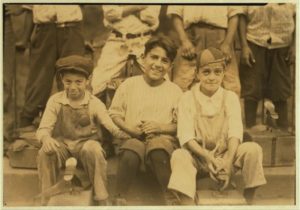
Boot Blacks and the Struggle to Survive in Hartford
In the late 19th and early 20th centuries, young boys who shined shoes (sometimes 70 hours per week) were the primary breadwinners for many struggling families.
Read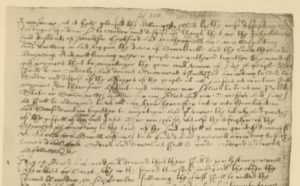
The Fundamental Orders of Connecticut
The Fundamental Orders, inspired by Thomas Hooker’s sermon of May 31, 1638, provided the framework for the government of the Connecticut colony from 1639 to 1662.
Read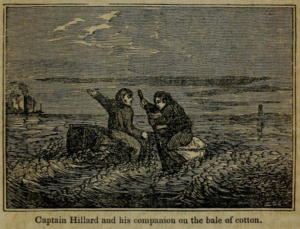
“Appalling Calamity”: Loss of the Steamboat Lexington – Today in History: January 13, 1840
On January 13, 1840, over 150 people perished on Long Island Sound when the steamboat Lexington caught fire.
Read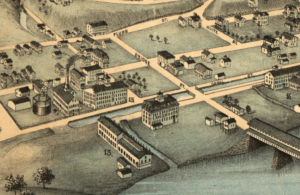
The Derby Silver Company
The Derby Silver Company was founded in 1872 and began operations on Shelton’s Canal Street one year later.
Read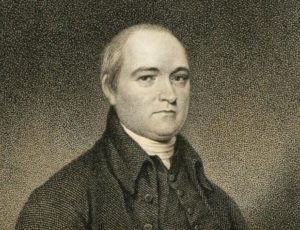
Timothy Dwight Dies – Today in History: January 11
On January 11, 1817, Timothy Dwight (theologian, educator, poet, and eighth president of Yale) died in New Haven, Connecticut.
Read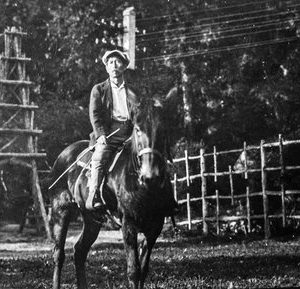
Yukitaka Osaki and Gillette Castle: One of Hadlyme’s First Japanese Immigrants
For over four decades, Japanese-born Yukitaka Osaki worked for Gillette, becoming a recognizable neighbor in the Hadlyme community.
Read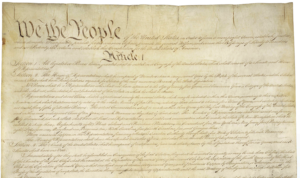
Connecticut Ratifies US Constitution – Today in History: January 9
On January 9, 1788, Connecticut became the fifth state to ratify the Constitution of the United States.
Read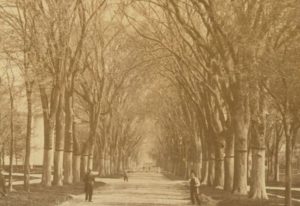
A Beautiful and Goodly Tree: The Rise and Fall of the American Elm
Almost every Connecticut town has an Elm Street, named for the popular trees that grew in abundance until a fungal infestation greatly diminished their numbers.
Read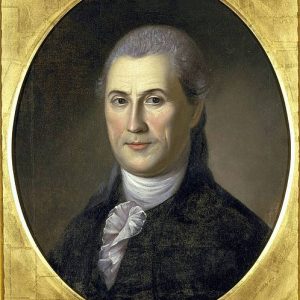
Samuel Huntington, the first President of the United States, dies – Today in History: January 5
Samuel Huntington not only served as Connecticut’s governor and a member of the Continental Congress, but, some would argue, the first President of the United States.
Read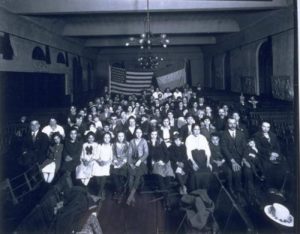
Building an Armenian Community in New Britain
Since the late 19th century, Armenian immigrants and descendants have created a community and shaped New Britain history.
Read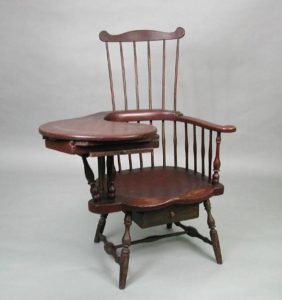
Ebenezer Tracy Made Some of the Finest 18th-Century Furniture
Ebenezer Tracy was a carpenter from Lisbon, Connecticut, who specialized in making fine, hand-crafted furniture.
Read
Connecticut Turnpike Opens – Today in History: January 2
On January 2, 1958, Governor Abraham Ribicoff officially opened the Connecticut Turnpike—today the Governor John Davis Lodge Turnpike—to traffic.
Read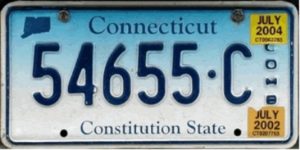
Creative License, or Fundamental Fact?
In 1973, the state legislature mandated that Connecticut’s license plates should display the state slogan “Constitution State.”
Read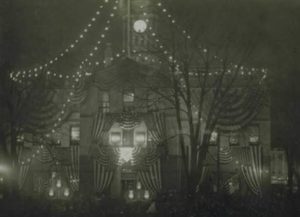
A Turn-of-the-Century New Year’s Eve
Hailed as the “Century Celebration,” the evening of December 31, 1900, saw revelry and reflection as individuals throughout the state welcomed the New Year.
Read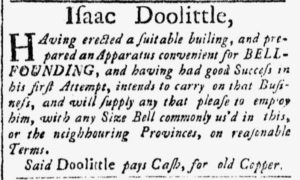
Early Church Bell Founders
Church bells served many important functions in early New England. Consequently, skilled bellfounders in Connecticut found themselves in high demand.
Read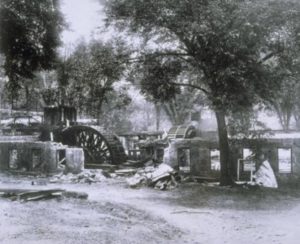
Birth of the Brass Valley
The brass industry in Waterbury began in the mid-18th century and provided an alternative for people struggling to make a living off the rocky, exhausted soil.
Read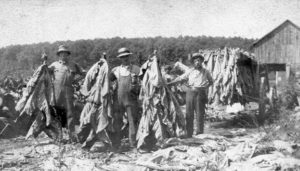
William Pinney Does It All for Ellington
A lifelong resident of Ellington, William N. Pinney served his town and his state up until his death at the age of 90.
Read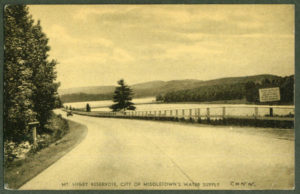
Middletown’s Reservoirs Drive Growth Throughout the 19th and 20th Centuries
The Laurel Brook and Mount Higby Reservoirs helped provide reliable sources of water that drove the growth of Middletown.
Read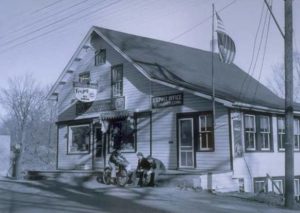
Connecticut’s Christmas Town
Nestled in a quiet section of Litchfield County lies the picturesque town of Bethlehem, known best for its designation as “Connecticut’s Christmas Town.”
Read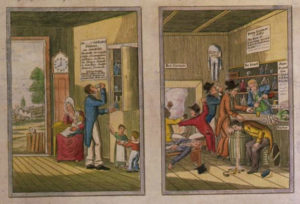
The Living Actually Haunted Many Connecticut Taverns – Who Knew?
Early Connecticut laws deemed anyone who spent excessive time in taverns as a “tavern haunter” and subjected them to fines and ridicule.
Read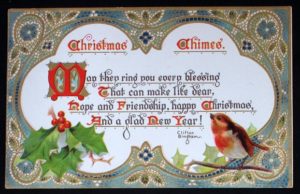
Sending Season’s Greetings: Christmas Cards in Connecticut
For nearly a decade, this little Connecticut town was renowned as the Christmas-card center of the world.
Read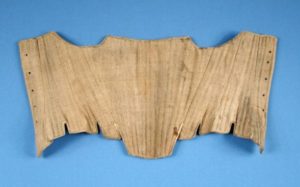
Little Nutmeggers: Four Centuries of Children’s Clothes and Games
Modes of dress and means of play for youngsters reflect more than changing tastes; they reveal shifts in societal attitudes toward the pre-adult years.
Read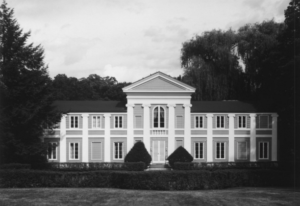
Hartford’s “Façade House”: The Unique Home of Chick Austin
A. Everett “Chick” Austin Jr. and his wife, Helen, designed one of the most unique homes of the 20th century in Hartford.
Read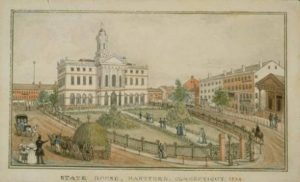
The Hartford Convention – Today in History: December 15
On December 15, 1814, delegates to the Hartford Convention met in secret at the Old State House in Hartford.
Read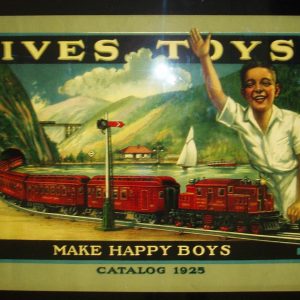
The Ives Manufacturing Company: Connecticut’s Foremost Toy Maker
The Ives Manufacturing Company—arguably Connecticut’s most famous toy company—became known for its variety of clockwork toys and trains.
Read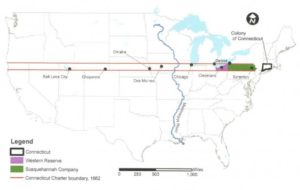
From the State Historian: The Map That Wasn’t a Map
The Charter of 1662 described Connecticut boundaries that extended all the way to the the Pacific Ocean!
Read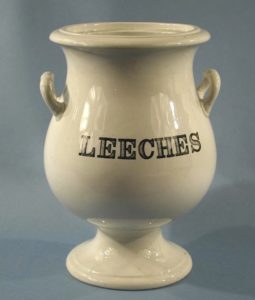
This Won’t Hurt a Bit! A Brief History of Anesthesia
After 1844, persons undergoing limb amputations, tooth extractions, and other painful procedures had reason to thank Dr. Horace Wells.
Read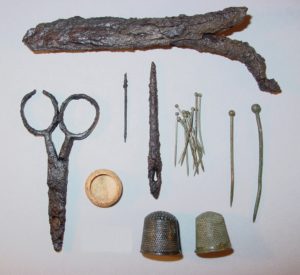
Waste Not, Want Not: The Colonial Era Midden
From tools, dishes, and clothing to muskrat bones, household trash from 1700s reveals how Yankees of the era lived.
ReadMore Articles




